#transport infrastructure
Text

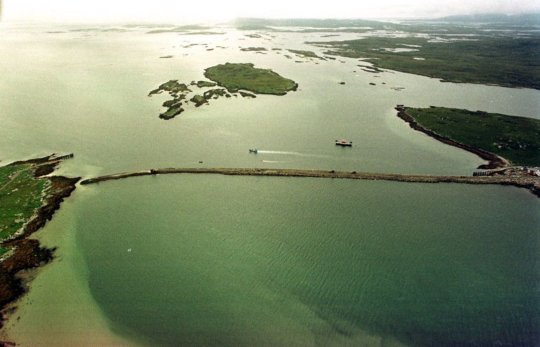

On 8th April 1999 the Berneray Causeway was officially opened, the stretch of road - which is just 1km long - transformed life in this area of the Outer Hebrides.
It was a drizzly and damp day as around 400 locals gathered for the historic occasion with the royal helicopter of Prince Charles, delayed by the conditions. But spirits were high as this new era of island life dawned.The causeway cost £6.6m to built and replaced the ferry which connected the two islands for generations. The new route eased up the journey for locals, allowing an smoother flow of goods and services and making it easier to get to work and school.
The April ceremony followed a celebration in December which marked the last ferry crossing.
Then Berneray’s youngest resident, Shaun Turner, aged one, and its oldest, John Macaskill, aged 89, bparded the boat to make the final trip over the Otternish, The first walk across had been in early August 1998 when the final rocks were tipped into the gap on the Ardmaree, Berneray.
26 notes
·
View notes
Text
sorry idk but the way the world is so fast and the people in it still want it to be faster is sooo annoying to me. people groaning while standing in line for 3 minutes people being mad the train ride is gonna take 2 hours people complaining that the bus is a few minutes late people being angry that construction work is taking months even though it used to take decades. don't you see the world is already so so so fast in every single aspect can't you understand that being mad will do nothing and just make your mood worse. enjoy the moments of stillness you're given. just stand in line and look at the people around you. sit on the train and watch the scenery. you'll get there.
#it's literally one of my main pet peeves not even sorry actually!!!!! esp ppl loudly complaining while standing in line or#when the train's like 2 minutes late coz it has to stop and ppl start yelling#hell even if it stops for 2 hours. who cares who cares who cares unless you're late for like a weeding or smtg who cares !!!!#literally just relax slow down. look at your phone idk#this one should be it's own post but like when people complain about budapest public transport it makes me so mad....#bruhhh shit's on time 99% of the time and it's like. outstandingly good compared to any other city#hungarian infrastructure in general like are the trains the best NO but they get you pretty much anywhere for like 30 cents#calm down !!!!!!!!!!#barking#humans
45K notes
·
View notes
Text
New Guidance Published In Relation To Asset Management Decisions At Structural Boundaries
The world oftransport infrastructure has inevitably often seen discussions and disputes arise on the subject of boundaries and responsibilities. It is key to good asset management to understand the interfaces between one highways authority and other parties, and developing such understanding helps to ensure engineering responsibility is correctly assigned.
By contrast, in situations where interfaces are not well-defined, otherwise avoidable risks can occur, together with extended negotiations, extra costs, and possible ‘gaps’ in maintenance responsibilities.
Of National Highways’ more than 23,000 structural assets, almost 9,000 are bridges. This means that various boundaries exist across a range of different types of structures. There can often be a lack of clarity, for instance, as to who owns retaining walls, with the situation at overbridges and under bridges also sometimes being less than clear.
How has this potentially invaluable guidance come about?
As reported by the Chartered Institution of Highways & Transportation (CIHT), work has recently been carried out by National Highways alongside the Association of Directors of Environment, Economy, Planning & Transport (ADEPT) National Bridges Group (NBG), under the Department for Transport (DfT)’s auspices.
The aim of this work has been to put together guidance that sets out a framework for asset management decisions at structural boundaries.
The resultant guidance document is entitled Definition of Asset Management Responsibilities: Bridges and Structures, and outlines typical issues and scenarios, in addition to providing clear recommendations for operational actions. The document also differentiates between existing structures and new ones.
What principles have been adopted for this guidance?
Although the new guidance document – which is available to view on the CIHT website – is not a code of practice or a standard, and cannot be counted on to resolve every possible boundary issue, it does nonetheless provide an important framework for agreement.
To this end, it works on the basis of certain crucial principles – including that of ensuring safety, establishing physical demarcation locations, setting technical responsibility, and assigning financial accountability. The guidance document also shows that work has been done to achieve consistency of approach between National Highways and the ADEPT NBG.
The framework for agreement that has been set out by the guidance brings financial implications for all parties, and makes clear the importance of respecting any prior written agreements.
Detailed appendices are provided with the guidance, setting out scenarios to explain what the guidance would mean in practice with regard to both new and existing structures. There is a particular emphasis on outlining the responsibilities at overbridges.
A milestone development for the boundaries of transport infrastructure
With this new document being in the joint ownership of DfT, the UK Roads Leadership Group (UKRLG), ADEPT NBG and National Highways, it certainly represents a major step forward on this persistent and often difficult issue.
The guidance document should help to ensure safety factors are given the paramount emphasis that they should be given, at the same time as outlining a vital framework for asset management practices for structures.
Do you have concerns or queries in relation to your next transport infrastructure project? If so, please do not hesitate to make Transport Planning Associates (TPA) your chosen consultancy, contacting us at our office nearest to you.
0 notes
Text
youtube
0 notes
Text
Cars vs Accessible Worlds

Alright, let me talk about one thing in terms of accessibility in science fiction settings - and Solarpunk specifically - that also has more than one side to it: Cars and accessibility. Because it is more complicated than you'd thing.
See: The fact that our world is so car centric really, really hinders accessibility. Wide streets are a hindrance for even normal pedastrians, cyclists and so on. If I want to get from A to B, and the route crosses a street, and there is only a traffic light every like 500 meters, it means tat I usually need either to risk my life or take the long way around to get there. And that is a fucking bother even when you are healthy and can easily take that long way around. And the more car centric a society is, the worse the issue becomes. Here in Germany it is a lot easier still to cross a street than in many places in the US.
And of course this gets a lot worse if you are disabled. Be it that you just cannot walk that far. Or if you are blind and cannot even see in what direction you could go for the next traffic light. Or if you are hard of hearing or deaf, you might be more in danger of being surprised by a car. (And that is without going into how electric cars being so fucking quiet makes stuff even more dangerous.) And, you know, neurodivergent people might also just struggle with the fucking noise that is created by roads and is often inescapable in big cities.
And of course even outside of the environmental issues, the constant presence of cars is also a health risk. Not just because of the risk of accidents, but also due to the pollution and how it interacts. Even if we all were driving electric cars, there would still be all those microplastics created by tires and streets and stuff.
So, really. We do need to move away from car centric infrastructure to make our lives healthier and to make the world more accessible for disabled people too.
BUT...
But there is the issue that some disabled people still might be in need to use some sort of personal transportation device that can cover both short and large distances, because for one reason or another public transport just does not work and cannot work for them.
For example someone with severe anxiety issues, or someone who will be easily suffering from sensory overwhelm. There might be other issues, too. Just some folks will always need something like cars.
And of course there is also the fact that stuff like emergency services will still need streets accessible to cars. Because the emergency services will just not get around using something like cars to get to all the places they might be needed.
And this... makes things complicated. Because infrastructure should not be car centric, no. But it needs to be accessible by cars - and be it just for emergency services.
This is just something that I would love to see more talked about especially within the Solarpunk sphere.
#solarpunk#lunarpunk#infrastructure#car centric infrastructure#anti cars#mobility#public transport#accessibility#disability rights#disability#15 minute city#trains
155 notes
·
View notes
Photo
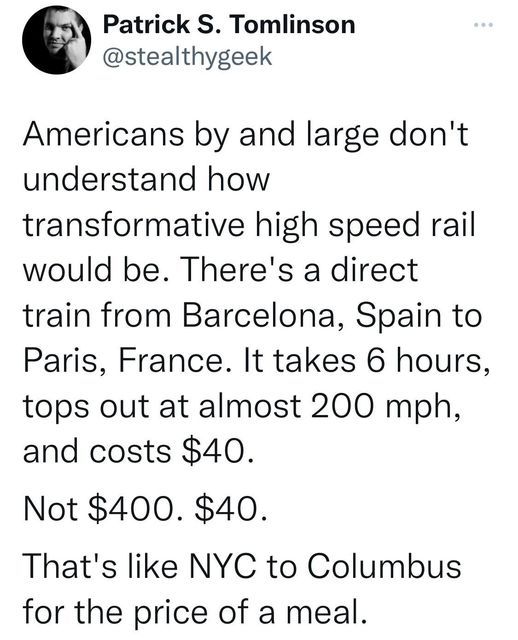
4K notes
·
View notes
Note
Freeways are NOT safer than surface streets, the most deadly accidents happen on freeways due to the high speeds involved. Look up actual statistics and go to drivers ed b4 you bootlick for freeways.
My very first ask! Thanks anon!
So, even though you called me a bootlicker for advocating for public transit, I'm going to address the core of your argument and leave out the ad hominem.
1. Couldn't find any statistics on freeway vs. surface streets percentage. If you've got it, let me know and stop using the smoothbrained alt-right "do your research" line. Only related thing I could find is that 17% of traffic deaths are pedestrians, which (statistically) don't occur on freeways.
2. I suspect you're right that more fatal crashes occur on freeways! However, we have to adjust for how much travel time is spent on freeways vs. surface streets. If they're far more heavily used (spoilers: they are), then even a higher number of deaths still equates to a LOWER number of deaths per capita, meaning they're safer. That's statistics, even if they don't agree with your world view.
3. (And this one is really important) Freeways suck. They suck for a plethora of reasons. There's so much scholarship and research on the suckiness of freeways. Public transit infrastructure is the solution to that problem. I will never advocate for the expansion of freeways (or even their use over surface streets), especially at the expense of a robust public transit system.
Huh, I guess I addressed the bootlicker comment after all, you sly devil.
#amtrak#public transit#freeways#infrastructure#bootlicking#trains#cars#transportation#half of my OCs are trains
166 notes
·
View notes
Text
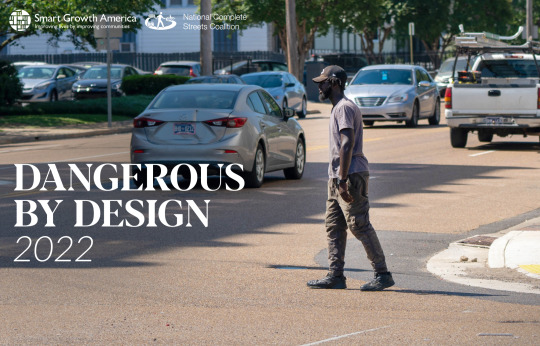
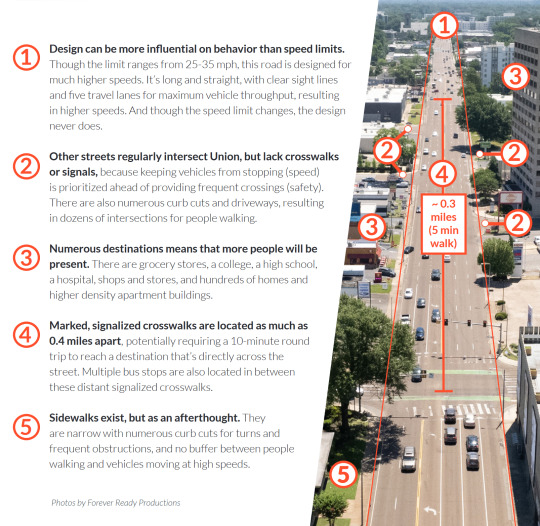







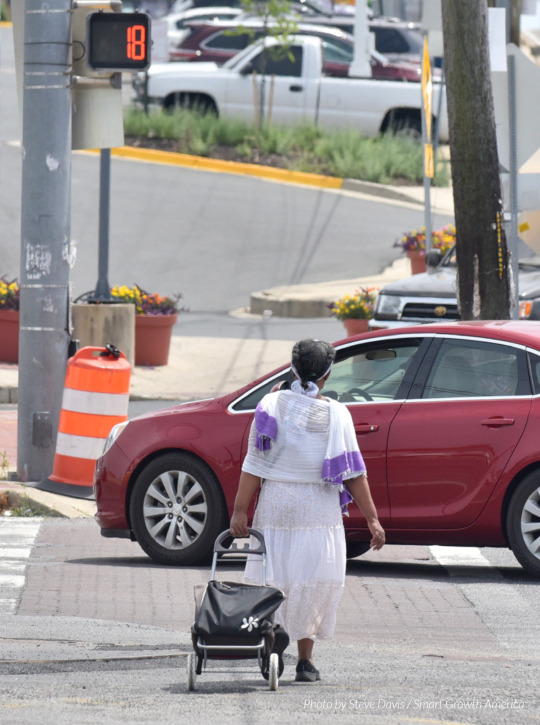
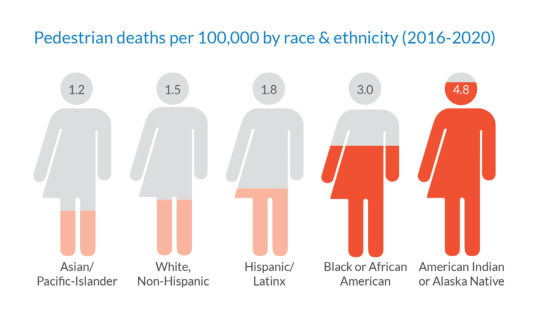

America's Roads: Dangerous by Design
#the link leads to the pdf that i got all these pics + graphics from#very interesting and informative and written in very clear and easy to understand language#please read please reblog this is something im passionate about#mine#pedestrian safety#car centric infrastructure#walkable cities#urbanism#public transportation#urban design
53 notes
·
View notes
Text
I hate you cars. I hate you Ford. I hate you GMC. I hate you car centered infrastructure. I hate you highway system. I hate you prioritization of motor vehicles. I hate you jaywalking. I hate you lack of public transportation. I hate you anti public transportation propaganda. I hate you trains you have to drive to. I hate you lack of sidewalks and crosswalks. I hate you giant slabs of concrete. I hate you stroads. I hate you lack of pedestrian safety. I hate you environmental destruction. I FUCKING HATE IT HERE!!!
#anti car#fuck cars#urban planning#stroad#car infrastructure#highway#american highways#america#WHYYY#i hate it here man#public transit#public transportation#public transport system#subway#trains#to be clear: i think people should be able to drive cars if they want#HOWEVER#people should also not be obligated to drive#and city infrastructure should focus on community and prioritize people#not cars#i hate cars
278 notes
·
View notes
Text
Love (cannot emphasis how much sarcasm there is in that word) that an official Canadian government response to high cellphone rates is to switch carriers.
Switch it to what? We basically have three companies since one was allowed to eat the forth (with the government saying it wasn't anti-competition and the company eating the other pinky promising they wouldn't jack rates up). Even the smaller companies have to rent infrastructure from the Big Three so there's only so much they can do if that rent costs an arm and a leg.
And that's not touching on how many "small companies" are actually just subsidiaries of the Big Three. You may save $5 but you're still with Telus/Rogers/Bell.
Or that the actual small companies tend to have shit coverage because they don't have the infrastructure available to them and are prevented from getting it. Or their traffic is throttled in favour of the Big Three's customers. Or both.
Or that they're extremely regional thus aren't an option for a huge chunk of Canada's population.
We have no true options and the government has shown time and again that they're fine with monopolies, in multiple industries, and don't care when said monopolies jack up prices to make shareholders and the c-suite more money at the expense of everyone else. At most there will be a verbal slap on the wrist and a giftcard for $25 that people have to register for, for a decade and a half of price gouging.
It's not talked a whole lot about outside the country from what I've seen and heard but Canada is a country of monopolies. A handful of companies own nearly everything, every province has a family or two that owns a hell of a lot (Nova Scotia is basically owned by one family at this point), and our government ignores it. Even the branch that is supposed to be against monopolies is fine with mergers and takeovers in most cases.
Because, you know, the company said it totally wouldn't use consumers' lack of options to increase prices.
#canada#so much of our infrastructure and critical construction such as housing#has been pawned off for decades to private companies#and i forgot to mention one (1) family owns the bridge that is a major international corridor between canada and the us#which is apparently fine even though they fought tooth and nail to stop a bridge they don't own from being built#like our housing crisis can be traced back to the government deciding to stop building public housing in the 90s#because they figured private developers would pick up the slack#affordable apartments don't bring in much money so we got decades of cheap-ass 'luxury condos' instead#and once airbnb became a thing we got entire buildings with units <300sqft#and of course when the party in charge rotates between conservatives and neolibs nothing changes and that can gets kicked down the road#and keeps getting kicked until something collapses and they see the chance to fully privatize an industry#something similar is happening to our healthcare system too#it has been left to languish for years/decades with funding freezes and cuts#and private companies are quick to jump in and get the government stamp of approval to do [thing] that the public system clearly can't do#when [thing] would absolutely be possible if it was actually funded and/or staffed#so many communities were cut off when greyhound closed up shop because there's no government inter-city transportation#we lost internet/banking/cell service/etc nation-wide because one of the big three decided to push an update to live without redundancies#and it bugged and took the entire company's network down#even the government agency that demands major companies have a backup on a different network was taken down because they ignored that#and they got a deal if they kept their backup with rogers while their main network was also rogers#so they couldn't even make an emergency statement or anything about it#half my province also lost all digital infrastructure because it's a private company and making a redundancy line would mean smaller bonuse#it's just so bad#joke all you want about how canada is nice and friendly#but you are wrong and it's hell if you actually live here#the only reason canada is seen as nice is because it's hard to not seem like the better option when the us is your neighbour#and because of decades of pr work to make canada seem friendly and nice and not at all problematic#in some countries you actually have to try to hide you're canadian because of how much we colonize and the damage we do to other countries#yes these tags have derailed from the post but ugh#i take major issue with people who insist canada is nice and has never done anything wrong
62 notes
·
View notes
Text
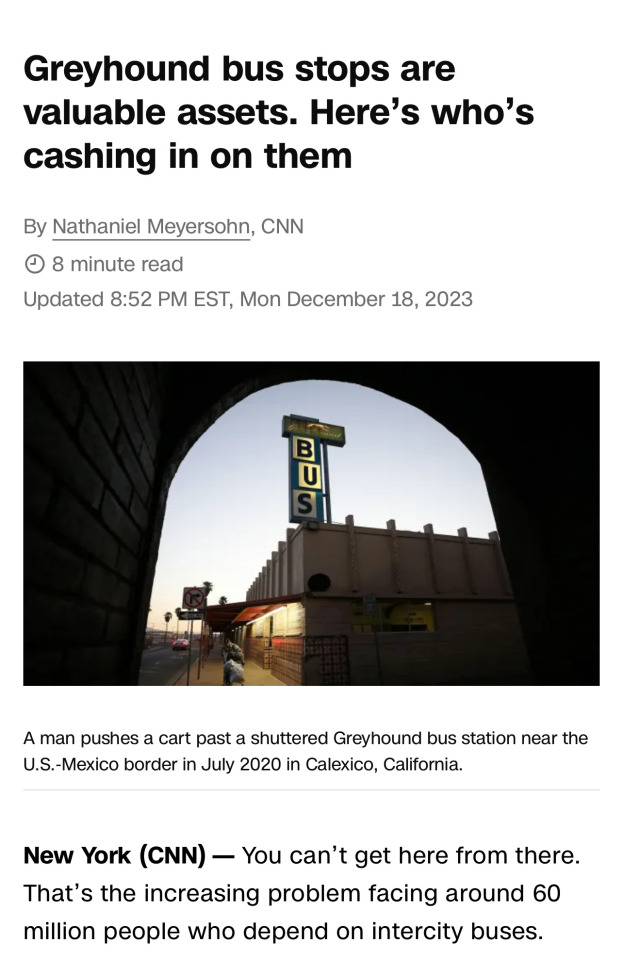
“All this happening at once is really startling,” said Joseph Schwieterman, a DePaul University professor who researches intercity bus travel and directs the university’s Chaddick Institute for Metropolitan Development. “You’re taking mobility away from disproportionately low-income and mobility-challenged citizens who don’t have other options.”
Roughly three-quarters of intercity bus riders have annual incomes of less than $40,000. More than a quarter would not make their trip if bus service was not available, according to surveys by Midwestern governments reviewed by DePaul University.
Intercity bus riders are also disproportionately minorities, people with disabilities, and unemployed travelers.
A spokesperson for Greyhound, which is now owned by German company FlixMobility, said it strives to offer customers the most options for connections, but has “encountered challenges in some instances.” The spokesperson also said they “actively engage with local stakeholders to emphasize the importance of supporting affordable and equitable intercity bus travel.”
The terminal closures have been accelerating as Greyhound, the largest carrier, sells its valuable terminals to investors, including investment firm Alden Global Capital.
Last year, Alden subsidiary Twenty Lake Holdings purchased 33 Greyhound stations for $140 million. Alden is best known for buying up local newspapers like The Chicago Tribune, New York Daily News and The Baltimore Sun, cutting staff, and selling some of the iconic downtown buildings.
Alden has started to sell the Greyhound depots to real estate developers, speeding up the timetable for closures.
“I don’t know the specific details of each building, but it is clear what is happening here: an important piece of transit infrastructure is being sacrificed in the name of higher profits,” said Stijn Van Nieuwerburgh, a professor of real estate at Columbia Business School.

“The public sector has turned a cold shoulder to buses,” DePaul’s Schwieterman said. “We subsidize public transit abundantly, but we don’t see this as an extension of our transit system. Few governments view it as their mandate.”
Bus terminals are costly for companies to operate, maintain and pay property taxes on. Many have deteriorated over the years, becoming blighted properties struggling with homelessness, crime and other issues.
But terminal closures cause a ripple effect of problems.
Travelers can’t use the bathroom, stay out of the harsh weather or get something to eat while they wait. People transferring late at night or early in the morning, sometimes with long layovers, have no place to safely wait or sleep. It’s worse in the cold, rain, snow or extreme heat.
Bus carriers often try to switch to curbside service when a terminal closes, but curbside bus service can clog up city streets with passengers and their luggage, snarl traffic, increase pollution, and frustrate local business owners. In Philadelphia, a Greyhound terminal closure and switch to curbside service after its lease ended turned into a “humanitarian disaster” and “municipal disgrace” with people waiting on street corners.
(continue reading)
#politics#infrastructure#bussing#public transportation#mass transit#mass transportation#capitalism#economic racism#the commons#greyhound#flixmobility#greyhound bus#greyhound bus lines#bus stops
71 notes
·
View notes
Text





On September 19th 1854 The Great North of Scotland Railway (GNSR) opened, running from Aberdeen to Huntly.
The Great North of Scotland Railway was established to connect Aberdeen with Inverness, a target which it never reached due to the hostility of the Highland Railway based in Inverness. Furthermore, this impoverished railway built a penetrating line deep into GNSR territory to reach Keith. Between Aberdeen and Lossiemouth (its furthest point from Aberdeen) the GNSR built a series of lines serving North East Scotland from the fishing ports of Fraserburgh and Peterhead to the distilleries of Speyside. A separate line (originally entirely separate with its own locomotives: the Deeside Railway) reached Ballater and was used by the Royal Family to reach Braemar.
The main station in Aberdeen was owned jointly by the GNSR and the Caledonian Railway (the North British Railway merely had access to it over the CR). Very little of the GNSR remains other than the mainline to Keith and the main station in Aberdeen. Only one of its typical locomotives the Gordon Highlanders in the pic has been preserved
Curiously the building in the last pic has never been a train station. The signage points it being part of GNSR, but it was actually used as a bus station of sorts.
In an attempt to service as many passengers as possible, the North of Scotland Railway introduced bus services to more remote towns in the early 20th century.
This bus depot serviced the people of Braemar until the Deeside line was closed in 1966. Today, the bright blue timber structure retains its original signage.
Despite the absence of restoration work, the facade of the building remains in one piece, and the depot’s waiting room and office can still be observed through the front windows The building has become a popular subject of many an Instagram post!
55 notes
·
View notes
Text

#urban planning#meme#cars#car dependence#fuck cars#(obligatory 'cars are good for some applications but the entire pop of a city depending on em just to get a bag of groceries is wtfery')#tbh it really fucks me off that the netherlands gets dumped with snow and is cold a lot but the canadian prairies act like it's a no go lol#netherlands#comic#bicycles#cycling#ebikes#induced demand#bakfiets#public transportation#public transit#infrastructure
69 notes
·
View notes
Text

it's a fucking airport
#this is not like a parking lot. airports are valuable transportation infrastructure#people like this are the reason that dulles is 45 minutes from DC
53 notes
·
View notes
Text
A Bridge Too Far
Immediately after the Key Bridge collapse, I wrote the following:
Congress needs to pass $$ for the Key Bridge rebuild ASAP. The longer it waits, the more likely some insane r-w conspiracy develops about how “bridges are DEI” and suddenly the funds are being tied to burning Pride books or something.
Sigh.
This week, Pennsylvania GOP Representative Dan Meuser slammed President Biden for calling on Congress to fully fund the response to the Baltimore collapse. Meuser insisted it’s “outrageous” that Biden wants to fund repairs in their “entirety,” and even demanded that some of this money must be taken from “ridiculous EV expenditures.”
[....]
Some GOP lawmakers are already treating future funding of the Baltimore response as a future concession on their part. Representative Jeff Duncan says Congress should not spend “one more dime” of additional infrastructure money before a border wall is built, as if the need for disaster relief can be used to extort Democrats into funding MAGA priorities in return.
[....]
It gets still worse. Some right-wing media personalities are floating whackjob theories blaming the collision on diversity, equity, and inclusion programs, on our supposedly open borders, and other MAGA preoccupations. Some “online influencers” and GOP politicians indulged in trivializing nitwit speculation and targeted Baltimore mayor Brandon Scott and U.S. Department of Transportation Secretary Pete Buttigieg with other assorted hateful smears.
Some predictions are too obvious to get credit for nailing.
(H/T)
via The Debate Link https://ift.tt/kZ8JNwD
27 notes
·
View notes
Text
The bicycle paradise that Atlanta planned and ignored

A 1973 publication titled "The Bicycle" was commissioned by the Atlanta Regional Commission (ARC), the Georgia Department of Transportation, and MARTA. It was the nation’s first regional bikeway plan. Seriously, it really was. And it would have been right here in Atlanta -- if it had been built.
In 1977, the City of Atlanta produced an actual, detailed plan would’ve produced a biker’s paradise, influenced by that publication (the image above is from that plan).
The city's stated intention was to: “provide bike paths within the rights-of-way of major streets and highways when such streets are improved or newly constructed.”
It also called for the development of “bicycle lanes in coordination with the construction of MARTA line segments.”
If the city had implemented the plan, by 1992 Atlanta would have had a reputation as a cyclist’s paradise.
I don't know the specific reasons why it never happened -- not beyond the basic inertia that seems to chronically vex cities like Atlanta, which suffer from decades of car-centric thinking.
My aim is not to make people sad about what never happened, by the way.
What I want is to send a warning: there is no shortage of great ideas for improving Atlanta's urbanism; what we have is a shortage of boldness within our leadership when it comes to implementation of the plans, and standing up to the resistance from people who fear changes to the status quo.
Watch out for that inertia.
Info source, Joe Hurley's great post here:
https://www.threadatl.org/2018/08/15/atlantas-second-chance-to-build-bikeways-and-complete-streets/
158 notes
·
View notes